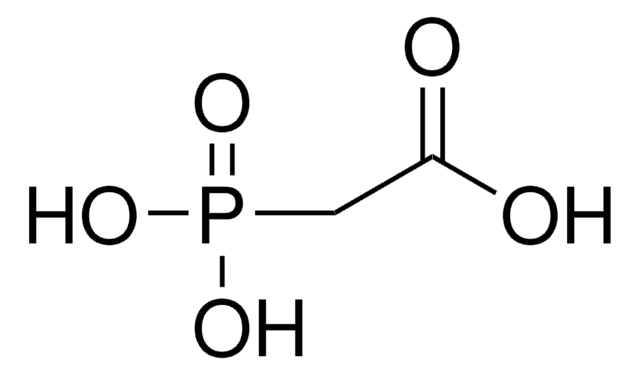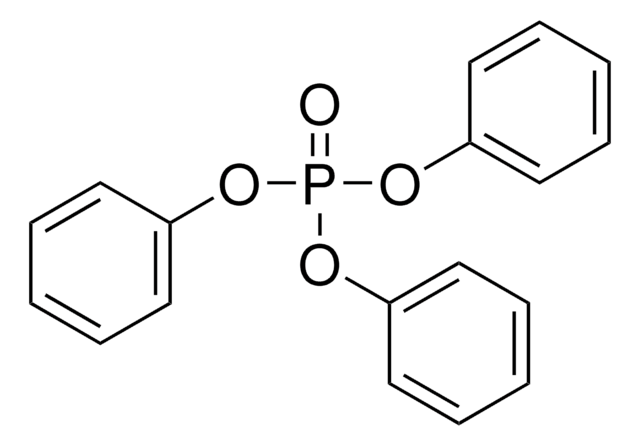612162
Phosphoric acid solution
NMR reference standard, 85% in D2O (99.9 atom % D), NMR tube size 4.2 mm × 8 in. , WGS-5BL Coaxial NMR tube
About This Item
Productos recomendados
grado
NMR reference standard
Nivel de calidad
Ensayo
83.5-86.5% (gravimetric)
Formulario
solution
concentración
85% in D2O (99.9 atom % D)
técnicas
NMR: suitable
tubo de RMN tamaño
4.2 mm × 8 in. , WGS-5BL Coaxial NMR tube
densidad
1.481 g/cm3
cadena SMILES
OP(O)(O)=O
InChI
1S/H3O4P/c1-5(2,3)4/h(H3,1,2,3,4)
Clave InChI
NBIIXXVUZAFLBC-UHFFFAOYSA-N
¿Está buscando productos similares? Visita Guía de comparación de productos
Descripción general
Aplicación
- As standard for the determination of phosphorus-31 nuclear magnetic resonance (31P NMR) chemical shifts of the common phospholipids.
- As external standard for the analysis of lipid composition of human white matter by 31P NMR spectroscopy.
- As external standard during the acid-labile phosphorylation of histone H4 by 31P NMR spectroscopy.
- As reference standard to investigate the surface species present on silica/alumina-supported sodium phosphates by pre- and postreaction MAS31P-NMR and FTIR spectroscopies.
Características y beneficios
Envase
Palabra de señalización
Danger
Frases de peligro
Consejos de prudencia
Clasificaciones de peligro
Acute Tox. 4 Oral - Eye Dam. 1 - Met. Corr. 1 - Skin Corr. 1B
Código de clase de almacenamiento
8B - Non-combustible corrosive hazardous materials
Clase de riesgo para el agua (WGK)
WGK 3
Punto de inflamabilidad (°F)
Not applicable
Punto de inflamabilidad (°C)
Not applicable
Equipo de protección personal
Faceshields, Gloves, Goggles, type ABEK (EN14387) respirator filter
Elija entre una de las versiones más recientes:
¿Ya tiene este producto?
Encuentre la documentación para los productos que ha comprado recientemente en la Biblioteca de documentos.
Los clientes también vieron
Nuestro equipo de científicos tiene experiencia en todas las áreas de investigación: Ciencias de la vida, Ciencia de los materiales, Síntesis química, Cromatografía, Analítica y muchas otras.
Póngase en contacto con el Servicio técnico








